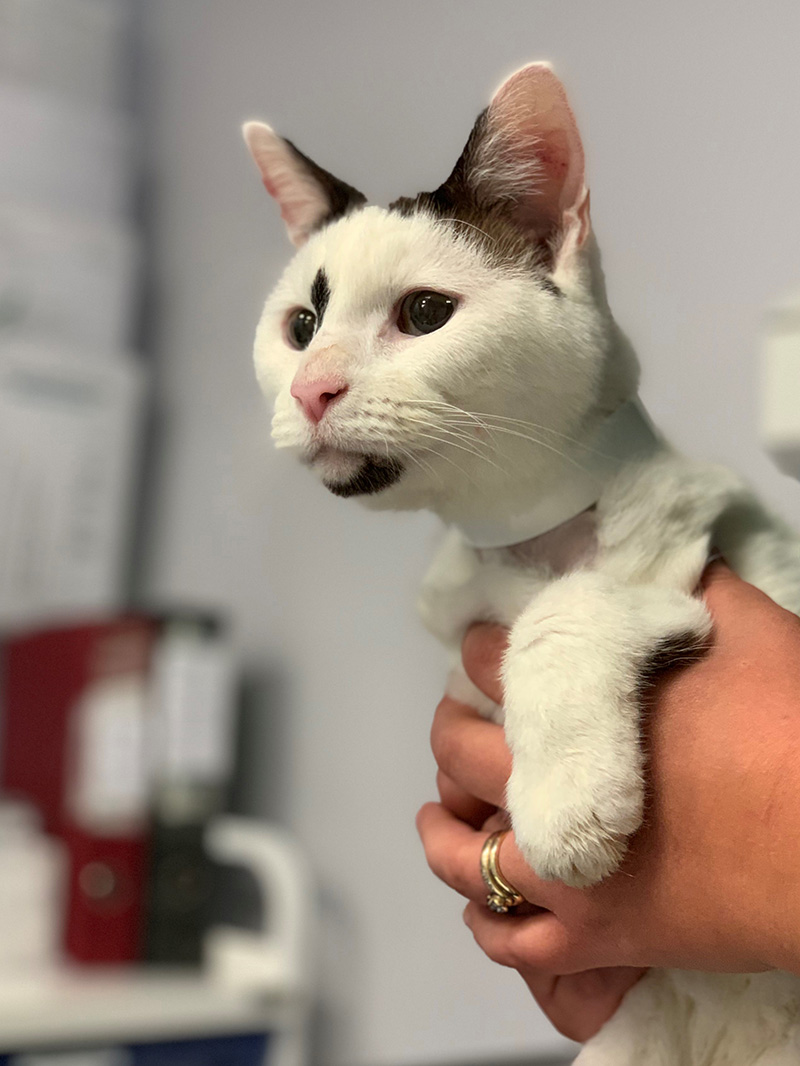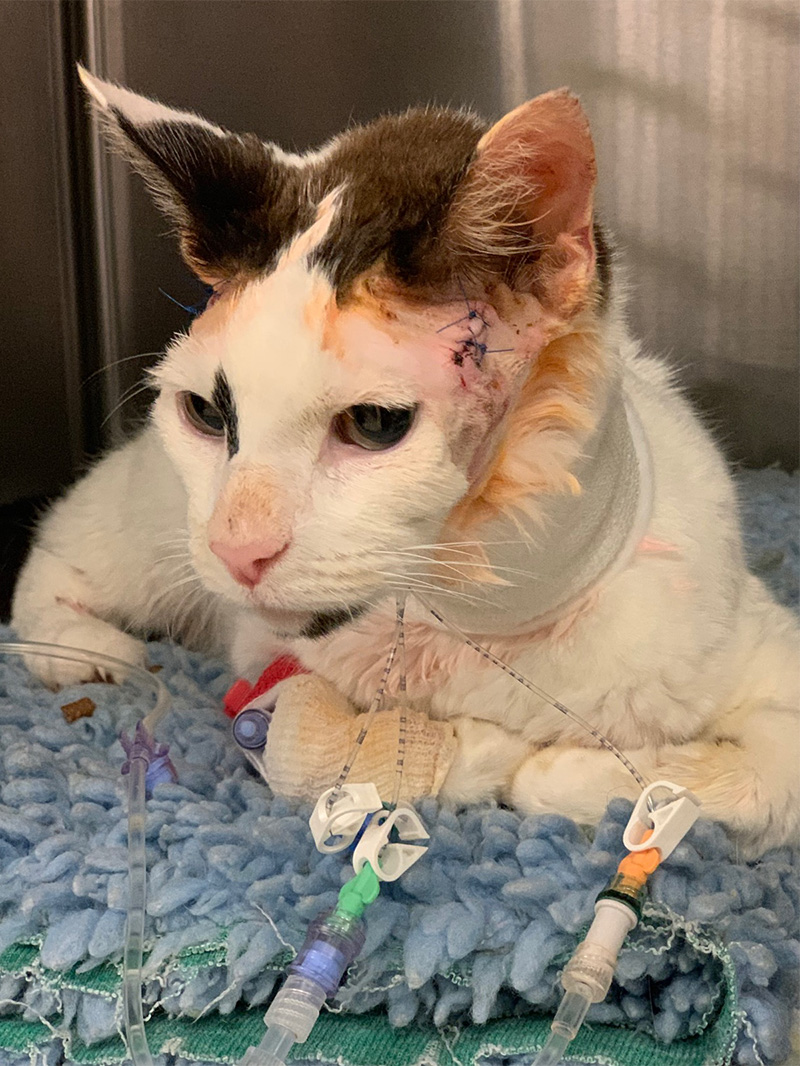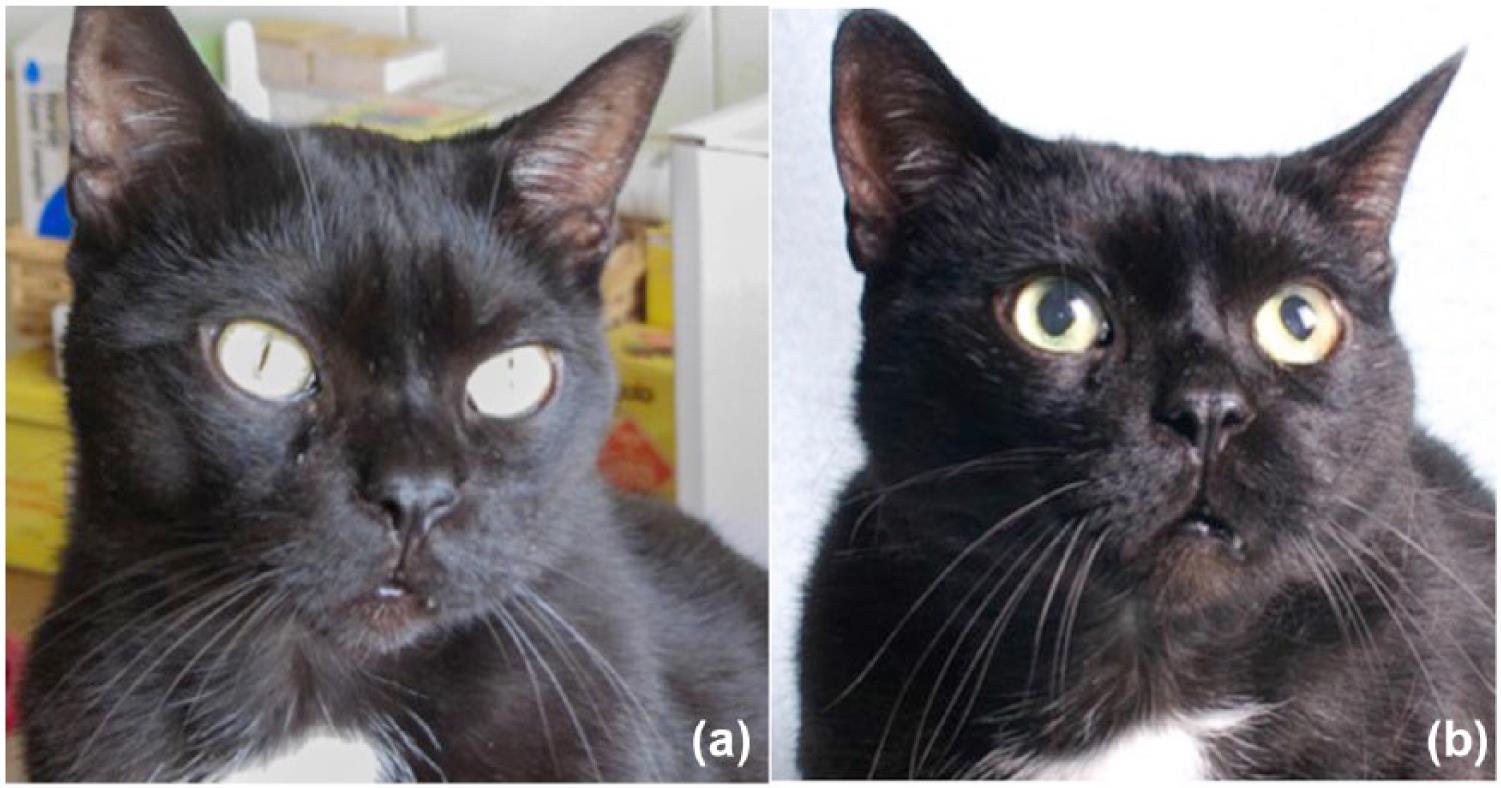acromegaly in cats uk
Acromegaly In Cats Uk Acromegaly is a disease that progresses slowly and symptoms will take some time to start showing. Affected cats can develop gradual changes in their appearance but because the disease develops over a long period of time owners may not notice any problems.

Acromegaly In Cats The Veterinary Nurse
It is more common in cats than dogs.
. The Management Of Feline Hypersomatotropism Hs Acromegaly Delectables Cat Treats Discontinued. Acromegaly is a relatively rare condition caused by excessive hormone production in the brain or in mammary gland breast tissue. Acromegaly in cats.
However with increasing case experience this signalment may change. It is more common in cats than dogs. Just like the normal non-acromegalic diabetic cat the acromegalic diabetic cat tends to be a middle-aged to older male neutered domestic short hair.
Acromegaly is an endocrine disease caused by a tumour in. Acromegaly is caused by excess secretion of growth hormone GH in adult animals. In the following article well tell you more about acromegaly in cats.
Researchers collected data between 2003 and 2011 on cats treated at veterinary practices across the UK to estimate the prevalence of hypersomatotropism or acromegaly and investigate how easy this is to recognise. Recent clinical studies at the RVC in the UK have brought to light the fact that Acromegaly is far more common than previously thought. Diabetic cats with variable control examined by general practitioners in the United Kingdom.
Acromegaly is a relatively rare condition caused by excessive hormone production in the brain or in mammary gland breast tissue. However cats of any age or sex can develop acromegaly. The RVC team was the first in the UK to treat cats with acromegaly.
One study has shown that one in three diabetic cats in North America suffers from acromegaly induced diabetes¹. It is a rare disease but unfortunately it can become quite serious. Affected cats can develop gradual changes in their appearance but because the disease develops over a long period of time owners may not notice any problems.
Acromegaly is a relatively rare condition caused by excessive hormone production in the brain or in mammary gland breast tissue. The prevalence amongst non-diabetic cats is currently unknown although these cats would be expected to become diabetic in the long-run. Growth of the extremities skull and muscles occur in some cats.
The potential of feline acromegaly providing. Its a rare disease but unfortunately it can become quite serious. It is more common in cats than dogs.
The term hypersomatotropism HST rather than acromegaly may be appropriate when describing the condition resulting from chronic excessive GH secretion in. Acromegaly is an endocrine disease consisting of hypersecretion of growth hormone gh. Acromegaly is the term used in human medicine to describe a condition resulting from chronic excessive growth hormone GH secretion.
Monday May 2 2016. An Acro Cat is usually suffering from significant pain as a result of the uncontrolled growth of bone and tissue you need to talk to your vet about appropriate analgesics to help. Acromegaly In Cats Uk - Stijn niessen who also runs the rvc diabetes remission clinic.
Another that one in four diabetic cats in the UK is suffering from the same². This procedure is most frequently performed at the RVC in patients with hormone-producing tumours. In the next article well tell you more about acromegaly in cats.
Transsphenoidal hypophysectomy is a technically challenging surgery to perform whereby a tumour affecting the pituitary gland is removed from the base of the brain through the soft palate in the mouth. Cardiomegaly and azotemia develop late in the disease. This article describes the pathophysiology and diagnosis of acromegaly in cats and what treatment options are currently available.
Common symptoms associated with insulin resistance include weight loss despite a good appetite and increased thirst and urination. In patients with markedly increased IGF-1 concentrations intracranial. Acromegaly is an endocrine disease consisting of hypersecretion of growth hormone GH.
The same Tight Regulation protocol used on Diabetic Cat International for non acromegalic works very well for cats with acromegaly and will help you control your cats BGs. Recognising this syndrome in these cats will be key to successfully managing the concurrent diabetes. In cats it is due to GH-secreting tumors of the anterior pituitary.
Affected cats can develop gradual changes in their appearance but because the disease develops over a long period of time owners may not notice any problems. Blood samples were screened for the possible presence of acromegaly with basal serum concentrations of insulin-like growth factor 1 IGF-1 and when available feline growth hormone fGH. These effects can be divided into two major classes.
On the other hand with a prevalence of 261 among diabetic cats and an estimated prevalence of diabetes of 1 in 200 cats in the UK up to one and a half in 200 in the United States the overall estimated prevalence of acromegaly in the domestic cat could be significantly higher than in the human population. Signs related to diabetes mellitus are typically the first clinical signs noticed. Treat the pain.
Acromegaly should be considered as a possible cause of difficult to regulate and high dose diabetic cats. The origin of this alteration in cats is the presence of a tumor in the pituitary gland. Stjin Neissen of the RVC Feline Diabetes Clinic is leading the charge when it comes to clinical research on the prevalence of FD and Acromegaly in cats.
Approximately 1 in 4 of assessed diabetic cats were found to be suffering from hypersomatotropism-induced diabetes mellitus. Feline acromegaly is a disease characterized by excessive growth hormone secretion leading to a wide array of clinical signs caused by the hormones effects on multiple organ systems. The origin of this change in cats is the presence of a tumor in the pituitary gland.
The catabolic actions of growth hormone include insulin antagonism and lipolysis. Prevalence of acromegaly amongst diabetic cats in North America and the UK was found to be around 1 in 4 diabetic cats seen in primary practice. Acromegaly is an endocrine disease that consists of hypersecretion of the growth hormone GH.
Neissen states Acromegaly one of the endocrinopathies in the. The disease is therefore likely currently underdiagnosed. Acromegaly is most commonly seen in older 10 years old neutered male cats that have insulin-resistant diabetes mellitus.

Pioneering Hypophysectomy Treatment Reaches 100 Case Milestone

Acromegaly In Cats The Veterinary Nurse

Update On Feline Acromegaly Niessen 2013 In Practice Wiley Online Library

Pdf Acromegaly In A Non Diabetic Cat

Pioneering Hypophysectomy Treatment Reaches 100 Case Milestone

Acromegaly In A Non Diabetic Cat

Woman Begs People To Stop Blaming Her For Her Fat Cat S Massive Size Metro News